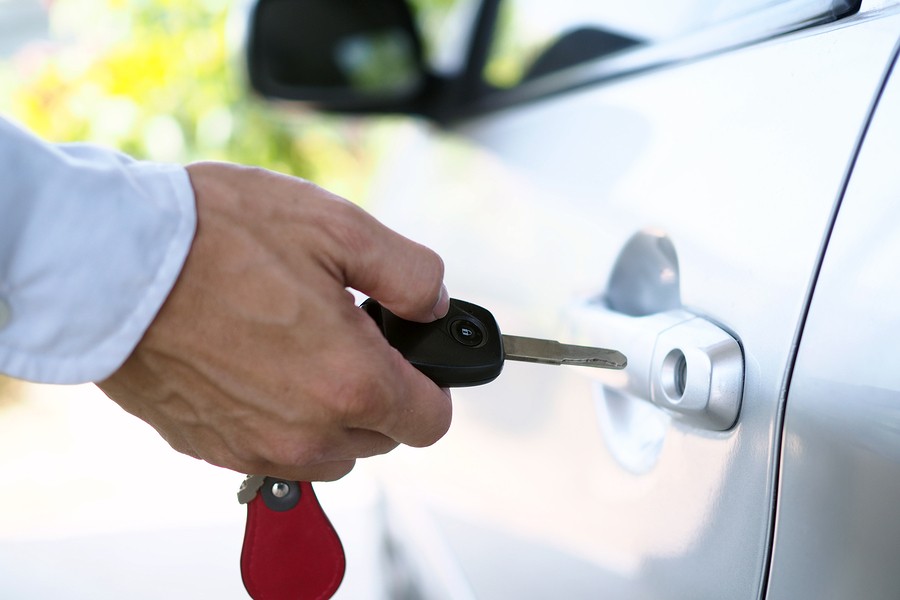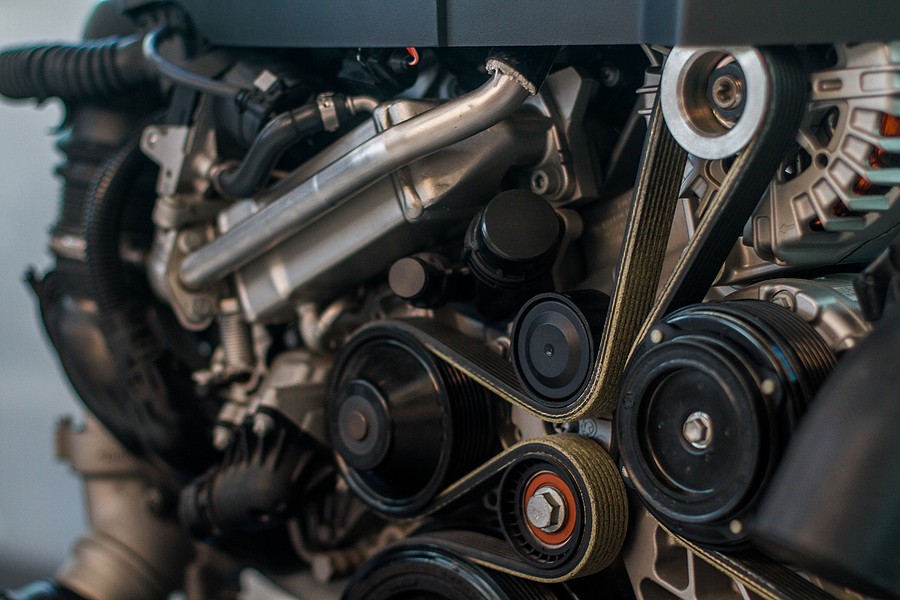If you've ever asked yourself, “what are the different types of car belts?” Here's the detailed list:
- Timing belt
- Fan belt
- Alternator belt
- Serpentine belt
Your vehicle contains hundreds of interacting internal components playing important jobs. Familiarizing yourself with one or two components helps you understand how your vehicle works. It also allows you to expect what could go wrong and encourages you to take care of certain more critical elements than others.
In some scenarios, car owners might be familiar with larger components like the engine, transmission, etc. However, another. Not all car owners understand that some minor components play a major role in our vehicles. For example, the car belts are significant but not big and might not sound like a complicated element.
This article helps you answer the question of what are the different types of car belts? It also walks you through the detailed job of each one of them, along with some other information that helps to detect when these belts go bad. This way, you can know exactly when to take your vehicle to the repair shop and when the problem is very serious.

What are the different types of car belts?
Your vehicle's belts are critical components that mostly transfer the energy from one component to another. Typically, these builds are connected to the engine, and they supply certain components by transferring mechanical energy.
Not every vehicle contains the same list of belts because it depends heavily on the engine site and age and how it was designed.
In general, there are four common types of belts that you might encounter in any vehicle. Let's take a closer look at each one of them along with understanding their main function:
1. Timing belt
The timing belt is one of your vehicle's most common and critical belts. As the name suggests, it's responsible for timing a certain job. It is connected directly to the camshaft and the crankshaft through several pulleys. As these pulleys move and as the shafts move when the engine works, the timing belt ensures that the camshaft moves at the right frequency, which confirms that the valves open and closes at the right time.
If you don't already know, timing is critical to how your engine works. Your engine must receive the right amount of fuel, air, and compression along with a spark at the right time. If any of those components did not come at the right time, you'd deal with engine problems that might impact the way your vehicle performs.
Therefore, the timing belt plays an important role in opening and closing the valves and how your engine functions. Therefore, it is critical for you as a driver to maintain a good timing belt and never come to a point where the timing belt fails because it results in significant damage.
In many instances, when the timing belt goes bad, it leads to problems that will cost you way more than what that timing belt costs.

How long does the timing belt last?
Typically, the timing belt is expected to go bat around 90,000 miles. However, some vehicles have timing belts of good quality and can last up to 110,000 miles. Therefore, you must review your vehicle specifications and understand exactly when to replace the timing belt.
Some experts recommend that you replace the timing belt no matter what. In other words, if you hit the 90,000 miles and you know that the timing belt is not in bad condition, it is still a must to replace it so you don't have to deal with some major damages that will happen once the timing belt goes bad.
One important note is that you'll also need to replace the water pump when your timing belt goes bad. It might sound a little bit strange, but it's been proven that the water pump goes bad at the same time as the timing belt. Therefore, it is wise for you as a driver to replace both components simultaneously. In addition, your mechanic will reach the same location and need to get the same area to replace the timing belt, so why not replace the water pump?
Note that sometimes the water pump goes bad faster than the timing belt. When that happens, you still need to replace the timing belt just in case before it gets worse and causes you tons of troubles that will cost you thousands of dollars, if not the entire vehicle.

How much does it cost to replace a timing belt?
Replacing the timing belt should cost you somewhere between $500 and $1000. However, some instances where your vehicle might be worth more, which means timing belt replacement might exceed the $2000.
2. The fan belt
The fan belt does not exist in every vehicle, and it's mostly included in older cars. However, it is responsible for powering several components in your cooling system. In most vehicles, the cooling system components are powered by the Serpentine belts, but in some instances, you might see them powered by the fan belt.
Typically, the fanbelt powers the water pump, radiator fan, air conditioning, etc. By powering these components, the fan belt ensures that the cooling system works all the time.
The cooling system is responsible for cooling down your engine as it overheats. The engine must work within a specific range of temperature, and when it exceeds this range, it gets to a point where it must be cooled down; otherwise, your engine overheats and gets damaged.
Fixing an overheated engine is not a fun job, and it might not be cheap. Some customers reported that once the engine overheats, it got to a point where it's beyond repairs, and that's where they had to install new engines, which is extremely expensive.
Therefore, as a driver, you must familiarize yourself with how often you should replace the fan belt. Unfortunately, there is no cutoff for a specific threshold to replace the fan belt because it depends heavily on your vehicle's type and the fan belt quality.
3. The Serpentine belt
The Serpentine belt is another critical component in any engine. It is responsible for powering significant components like the alternator, power steering pump, and air conditioning. In some instances, the same belt might power the water pump.
This belt is typically located at the front portion of your engine around the crank pulley. However, you'll find this belt extending around the entire engine because it's the longest belt in your engine.
How often should I replace the Serpentine belt?
Typically, the Serpentine belt lasts between 50,000 miles and 100,000 miles. But, again, you'll have to check your vehicle specifications to confirm when exactly to replace it. You also need to check it frequently to confirm it's in good condition before it even hits the 50,000 miles therapist. Plenty of articles highlights the main symptoms indicating that the Serpentine belt is available.
That's the good thing about your car because vehicles always show you some symptoms to grab your attention to certain failures in your car before they even happen.

How much does it cost to replace a serpentine belt?
The Serpentine belt is not as expensive as the timing belt and shouldn't cost you more than $200. Some cheaper vehicles use a timing belt for only $78. But, of course, you'll have to calculate the labor cost that goes into it, which means that going to a small independent shop will be much cheaper than going to a big dealership.
Note that you'll have to have the right level of mechanical experience when replacing these belts. That's why owners of luxury cars prefer to go to the dealership to replace these belts even though they know that labor cost is more expensive than small independent shops. However, they confirm that the right people work on their vehicles, and there's a very limited chance for those people to introduce some mistakes that could result in significant problems.
1. The alternator belt
Although most vehicles have the Serpentine belt powering the alternator, some types of cars use alternator belts. This belt only transfers the energy from the engine to the alternator to power it.
Of course, you'll have to revisit your vehicle's design and look through your vehicle's owner’s manual to confirm whether it has an alternator belt or not.
If you confirm that your car uses an alternator belt to charge the alternator, you must keep this belt and condition all the time. Otherwise, it'll have trouble with many electric components, and most importantly, it'll deal with a dead battery.
If you don't already know, the alternator is responsible for charging the battery as your engine is running. Many people think that the battery is the component responsible for charging the electric components all the time. However, that's not the case. The battery only uses its charge to get your vehicle started, and once your car start running, it's then the alternator job to power the different components, including the battery.
Therefore, if the alternator belt goes bad, you'll see that the battery also doesn't work, and the other electric components do not work as well.
Can I replace the different types of car belts by myself?
It all depends. If you have the right level of mechanical skill sets that helps you access the engine and remove each belt safely without causing any other damages, you can go ahead. However, if you feel this is the first time you're doing it, you'll need to be aware that there are very high chances that you'll cause some damage is that might cost you a lot of money.
Automotive experts never recommend experiencing your vehicle, especially if it's not cheap. Therefore, no matter how much it will cost you to get the job done at an independent shop or by a professional mechanic, it should not be as expensive as causing some unexpected damages to your engine because you're messing it out with one of the most critical components, which is your engine. It's not something like replacing your windshield wipers or other minor components.
Thus, it will be your judgment to confirm whether you're ready to replace these belts or not.

What are the different types of car belts? Final thoughts
Familiarizing yourself with the different types of Car belts is one of the most important things that you can't understand about your car. These belts might look like minor components, but they play a major role in powering significant elements in your car like the water pump, alternator, Thor showing pump com, etc.
This article walked you through the different car belts, including the timing belt, the fan belt, the alternator belt, and the Serpentine belt. It highlighted the main job of each one of them along with some details about how often you should replace them.
You should understand the different types of car belts in your car, but also, you'll need to understand how often you should replace them and how critical it is if you miss a built replacement. Most of these belts should not go bad, and if they do, daily just significant problems that cost you tons of money. Therefore, you should not get to a point where any of these belts break down completely as long as you watch any symptoms indicating failing belts.
In some scenarios, you might get to a point where you deal with a completely damaged Serpentine belt or timing belt. When this happens, your engine might fail down completely, which could cost you a lot of money. Most older motive experts recommend selling your car before wasting thousands of dollars on a vehicle, especially if it's not worth it.
Cash Cars Buyer is one of the top-rated car removal companies in the nation that guarantees to pay you the top dollars and provide you with free towing despite your living location around the united states.
Our process is very straightforward and doesn't take more than a couple of days to get your car removed safely and for the most money.
All it takes you is to:
- Describe your car’s type and condition
- Receive our instant free quote
- Accept the quote
- Get your car removed and receive your cash payment on the spot!
To learn more about our process and our teen, you can reach out to us by giving us a call at (773) 791-4363 or visit our home page click on the free instant online offer.



